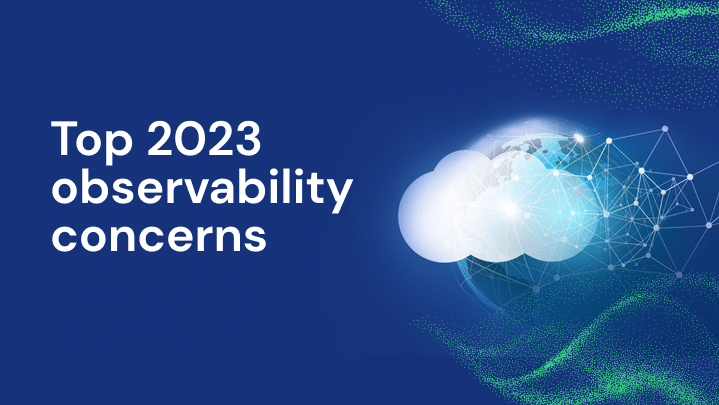Observability data growth rate is concerning and costly
Chronosphere recently partnered with analyst firm Enterprise Strategy Group (ESG) to commission a study to research observability adoption challenges and benefits. ESG surveyed 374 IT and DevOps/AppDev professionals in North America responsible for evaluating, purchasing, managing, and building application infrastructure. The majority of respondents (79%) were from organizations with 1,000+ employees. Here are some key findings from the survey, Observability and demystifying AIOps:
Sixty-nine percent of survey respondents agree that their observability data is growing at a concerning rate, with 20% of respondents identifying data collection growth as one of their top three biggest concerns when it comes to using or supporting observability solutions. To address this growth, organizations are taking a mix of steps, including increasing storage spend (52%), limiting the number of observed applications (44%), and limiting the number of observed metrics per application (43%).
Our Take: Observability data growth equals cost growth. As more organizations adopt cloud native architectures, this growth starts to accelerate, as do costs. Cloud native environments create a lot of observability data no one uses — yet organizations are forced to pay for it. Everyone knows there is waste, but it’s difficult to identify because most observability tools don’t make it easy to do so — or easy to stop collecting it.
As a result, companies look for broader ways to control growth. And we see that in the results of this survey with a large number of organizations limiting the number of observed applications and/or limiting observed metrics per application. These restrictive steps don’t come without a cost, and we see that in our next highlight.
SLAs are a priority, but achieving them is difficult
When asked about their organization’s most important priorities with regard to their monitoring and/or observability strategy, 48% responded, “Providing real-time insights into applications and/or infrastructure environments to ensure that service level agreements (SLAs) and performance commitments are met.” On a later question, when asked about their biggest challenges, 60% of respondents agree that “Lack of visibility into our cloud applications makes achieving SLAs a challenge,” and only 20% chose “Improved SLA performance” as one of their monitoring/observability strategy’s most impactful benefits, but was the second-most common identified benefit.
Our Take: Meeting SLAs is a critical component in ensuring customer satisfaction. An application or service outage doesn’t make anyone happy. What is interesting here is when you look at it in the context of the previous highlight. Organizations are actively limiting their visibility (either by limiting the number of applications observed or the number of metrics collected) yet a majority of respondents say a lack of visibility is why achieving their SLAs is difficult. Organizations are forced to make painful cost vs data collection tradeoffs.
Better observability isn’t about more data, it’s about having the right data. Not all observability data is created equal. When observability tools don’t easily allow you to identify waste and eliminate it, organizations are forced to take blunt approaches to limit what data they collect to control costs.
Scalability and reliability are a top concern
When asked about the biggest challenges or concerns when it comes to using/supporting observability solutions, the study noted that “93% of organizations reported challenges that prevent them from realizing the full potential of these technologies.” Topping the list was scalability and reliability, at 25% of respondents.
Our Take: We hear this a lot from our customers running cloud native at scale. Many solutions built before the new world of cloud native can’t handle the amount of data these environments create, so dashboards and alerts experience delays. One of our FinTech customers was experiencing query and dashboard failures due to timeouts with their previous observability solution – leading to longer mean time to detection (MTTD) and lower customer satisfaction.
Conclusion
To hear organizations are concerned about the growth of their observability data, have issues maintaining their SLAs, and experience scalability and reliability issues isn’t surprising to us. They are paying more for observability but getting worse results. To control costs, many are being forced to make trade-offs that reduce visibility and increase risk. We hear these concerns from prospects every day, and it’s why many of our customers switched to Chronosphere.
Chronosphere allows you to analyze and transform your observability data so you can do more. With insights into what observability data is useful and what is waste, Chronosphere helps you right-size and continuously align the cost of your observability data to the value it delivers. Chronosphere customers, on average, reduce their observability data volumes by 48% while reducing troubleshooting time by 50%. Eliminating data no one uses or that doesn’t deliver value gives you room to focus on what is important to your business — better visibility and coverage that allows you to spend less time firefighting and more time building better software that delights your customers.






